Fix: Weather Widget Not Working in iPhone
There can be several reasons why the weather widget does not work or load on your iPhone. The app may encounter bugs or glitches, which can lead to improper functioning. Additionally, there might be device-related issues causing the widget to malfunction.
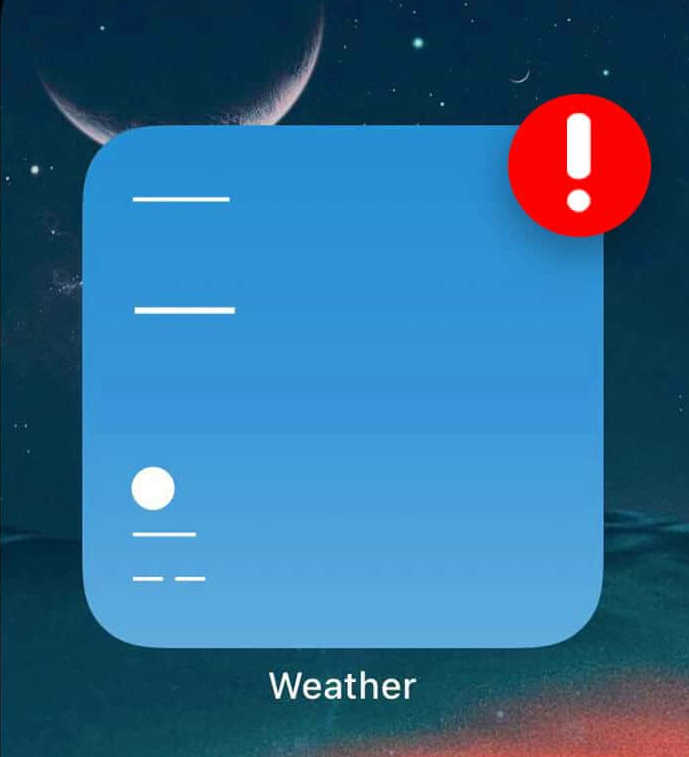
There are certain device features that you may need to enable or disable in order to ensure proper functioning of the weather widget. Let’s explore all the possible solutions to this problem!
1. Delete and Reinstall the Weather App
The Weather app might be experiencing malfunctions and glitches, which could be causing the weather widget to malfunction as well. Therefore, if the issue lies with the app, you will need to delete and reinstall it.
Here’s the step-by-step guide to deleting and reinstalling the app:
- Go to Settings and tap on General.
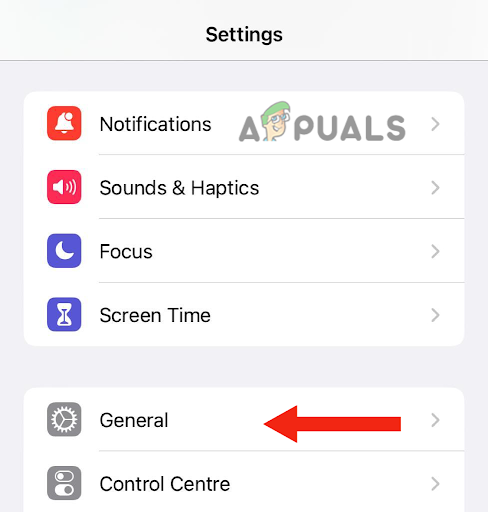
Go to General - After this, tap on iPhone Storage.
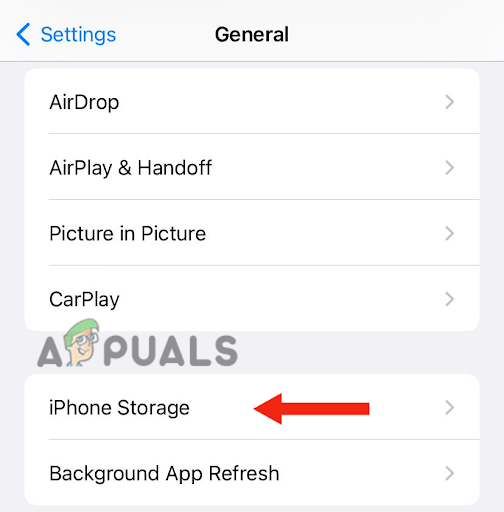
Choose iPhone Storage - Next, scroll down and tap on Weather.
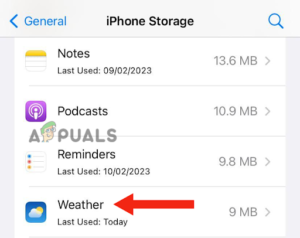
Tap on Weather - Tap on Delete App.
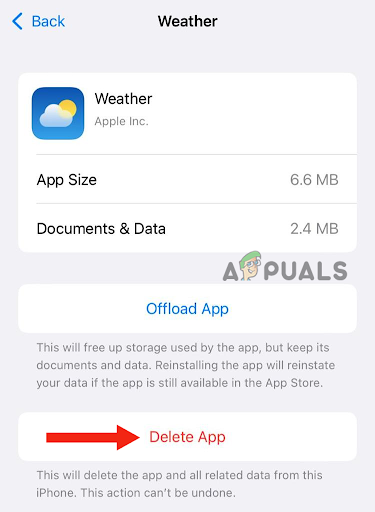
Hit the Delete App button - Tap on Delete App to confirm.
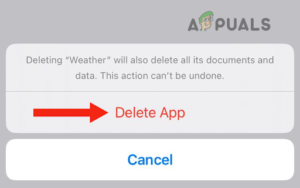
Tap on Delete App to confirm - After deleting the app, you need to install it again. To do this, you need to go to the App Store, search for Weather App, and tap on the Download icon.
2. Double Tap on the Weather Widget
Another simple fix that you can try to resolve the issue of the weather widget not working on your iPhone is to double-tap on the widget. Many users have reported that the weather update does not load on their widgets. However, when they tap on the widget twice, the weather updates.
The reason why double-tapping on the widget resolves the problem is that it refreshes the app, allowing it to function properly. To do this, simply navigate to the page where your widget is located and double-tap on it.
3. Enable Permission for Location
Sometimes, features on your devices can malfunction, causing apps or widgets to not work properly. When using a weather app, it is important to have location permission enabled.
A simple solution to fix this feature glitch is to toggle the location permission off (if it is currently enabled) and then toggle it back on. This will give the feature a fresh start, fix any bugs, and help the app work normally.
Here is a step-by-step method to disable and enable location permission:
- Go to Settings, scroll down, and tap on Privacy & Security.
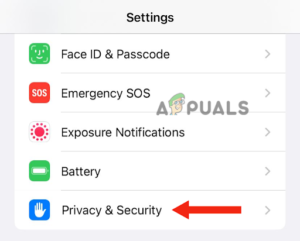
Tap on Privacy & Security - Next, tap on Location Services.
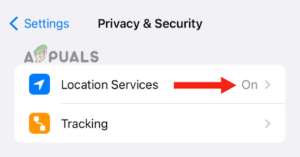
Go to Location Services - Turn off the toggle next to Location Services; after this, turn it on again.
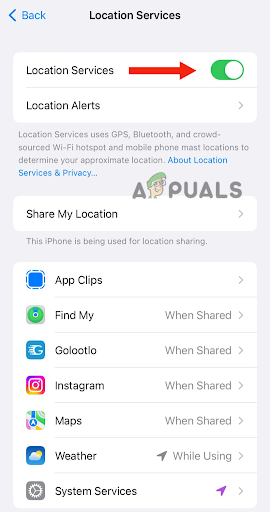
Turn off the toggle next to Location Services, then turn it on again - Next, tap on Weather.
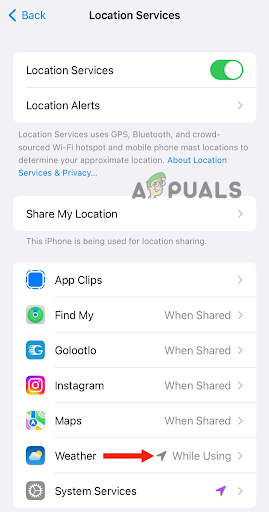
Go to Weather - If you can not see this option. Tap on the weather widget on the home screen. Here, you will get a pop-up message to Allow Weather to use your location. Tap on Allow While Using App.
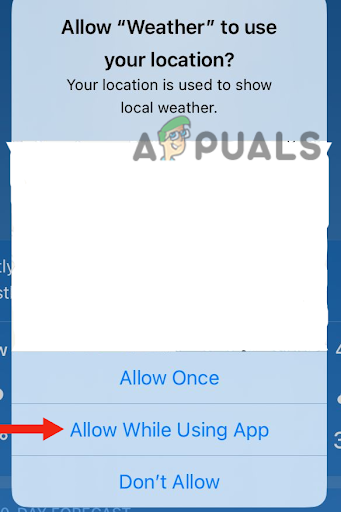
Tap on Allow While Using the App - Go back, and you will get another pop-up message to Allow widgets from Weather to use your location. Tap on Allow. Then go back to the Location Services page.
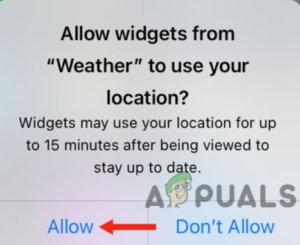
Select Allow - After tapping on Weather, disable and enable Precise Location.
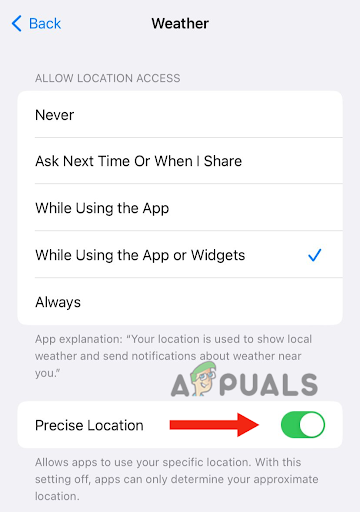
Disable and enable Precise Location - Lastly, tap on While Using the App or Widgets under the Allow Location Access section.
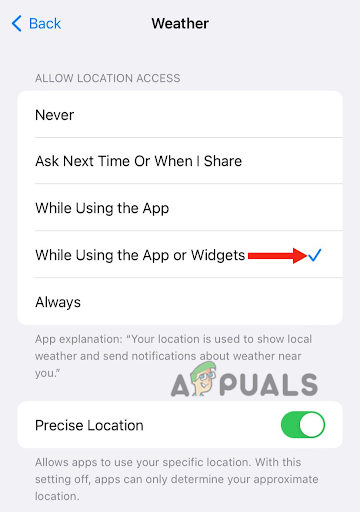
Tap on While Using the App or Widgets
4. Restart your Device
Sometimes there may be a connectivity problem with your iPhone, which can prevent widgets or apps from updating. You can solve this network connection issue by restarting your device.
In addition to addressing network connectivity problems, restarting your device clears the RAM, improving the device’s performance. It also resolves any software-related issues. Therefore, it is recommended to restart your iPhone whenever you notice any malfunctions. To restart your iPhone, follow these steps:
iPhone SE (1st generation), 5, or earlier models:
- Press the top button and hold it till the power-off slider appears on the screen.
- After this, drag the slider, and wait for around 30 seconds for your iPhone to turn off completely.
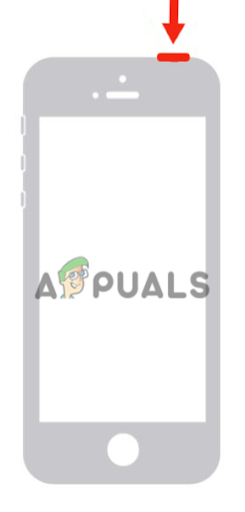
Press the top button and hold it till the power-off slider appears - Lastly, press the top button and hold it till you see the Apple logo to turn on your device.
iPhone SE ( 2nd or 3rd Generation), 6, 7, or 8:
- Press the side button and hold it until the power-off slider shows on your iPhone.
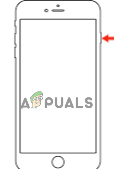
Press the side button and hold it until the power-off slider shows up - Drag the slider to turn it off and wait for around 30 seconds.
- Lastly, turn on your device by pressing the side button and holding it till the Apple logo appears on the screen.
iPhone X or later version:
- Press the volume up or down button, along with the side button, until the power-off slider shows on the screen.
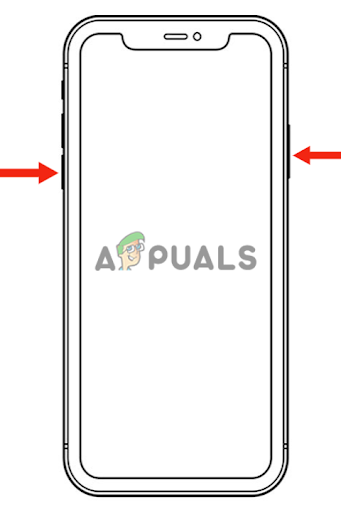
Press the volume up or down button, along with the side button, until the power-off slider shows up - Next, drag the slider to turn off your iPhone and wait for around 30 seconds.
- Press the side button until the Apple logo appears on your screen to turn it on.
Apart from doing a restart, you can also do a force restart, which is an advanced troubleshooting method. It will fix software-related issues and hardware-related issues.
Here is how you can do a force restart:
- Press the volume up button and release it instantly.
- Press the volume down button and release it instantly.
- Next, press the side button and hold it until the Apple logo appears on the screen.
- Release the side button.
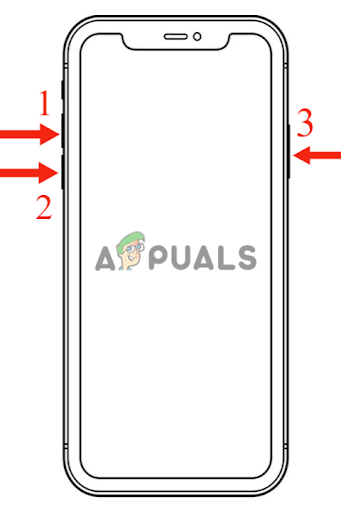
Force restart iPhone by pressing the keys
5. Turn On the Background App Refresh
If you have disabled the Background App Refresh feature on your iPhone, the weather widget will not function. This is because the weather app requires background updates to provide the latest information. When you disable all background activities, similar to the low power mode, the app will not receive any updates.
Furthermore, it will be unable to load any of its content, resulting in its non-functionality. To resolve this issue, you need to enable the Background App Refresh feature. This will allow apps to update their content even when you haven’t opened them.
Here is a step-by-step guide to enabling the Background App Refresh feature:
- Go to Settings and click on General.
- After this, Select Background App Refresh.
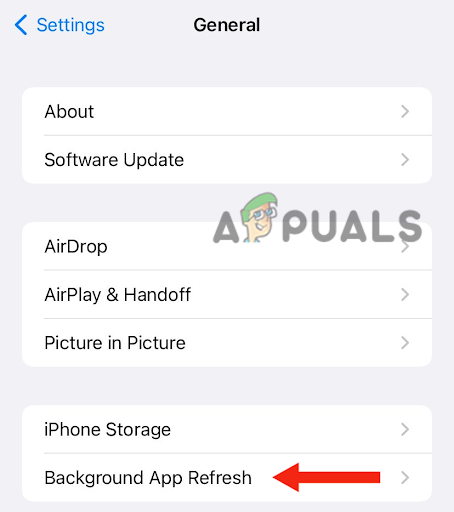
Tap on Background App Refresh - Lastly, turn on the toggle.
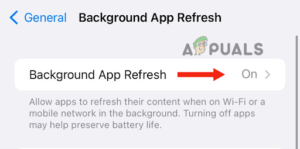
Turn on the toggle
6. Switch Networks
As mentioned earlier, your device may encounter network issues that prevent the weather widget from updating and loading correctly. To resolve this problem, you need to switch networks. This method is one of the easiest ways to determine whether the app or device is experiencing connectivity issues.
Additionally, it will address any bugs or glitches that may occur while connecting to networks. You can do this by accessing the control center, switching from Wi-Fi to mobile data, and then switching back to Wi-Fi. You can also try restarting the device in between (method 4) to ensure that all network-related issues are resolved.
7. Turn Off Low Power Mode
Low power mode on the iPhone is activated when the device’s battery is running low (below 20%). It reduces power consumption and limits background activities, thereby extending battery life. The battery icon will appear yellow when your phone is in low power mode.
Furthermore, this mode affects the performance of your device, causing it to become slow or laggy. This is because various background features are turned off, and apps take longer to launch. Therefore, make sure to charge your iPhone first and then disable this mode.
1. Firstly, go to Settings, scroll down, and tap on Battery.
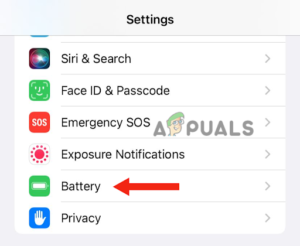
2. Finally, turn off the toggle in front of Low Power Mode.
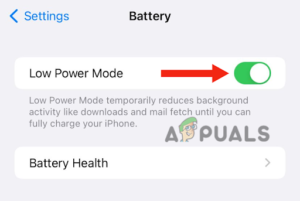
8. Update Your Device to the Latest Version
If the new iOS version is released, and you have not updated your device, it is the right time to download the update immediately. When releasing a new software version, Apple tries to solve all the bugs and problems with the previous version. Therefore, if the weather widget is not working, consider updating your iPhone.
Updating your iPhone to the latest version comes with various benefits. Firstly, it will improve the overall performance of your device. Secondly, you will get various new functions and features. Lastly, Apple will provide improved security.
Here’s how you can update your iPhone to the latest version:
1. Back up your iPhone using iCloud or a PC.
2. Connect it to the charger.
3. Connect your iPhone to the Wi-Fi.
4. Go to Settings and tap on General.
5. After this, go to Software Update.
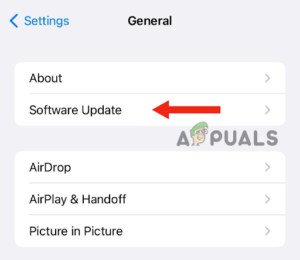
6. If there are two or more updates, select your preferred one. Then, tap on Install Now. However, if there is an option for Download and Install, choose to download the update.
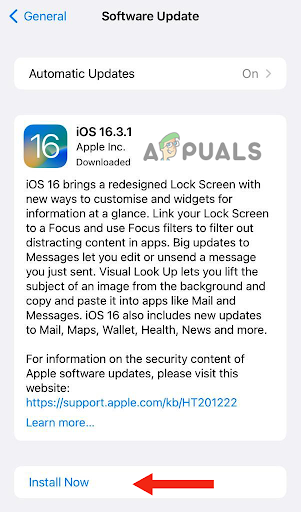
7. After the downloading completes, enter the passcode you use to unlock your device.
8. Lastly, click on Install Now.
In this guide, we have discussed 8 effective methods to fix the issue of the weather widget not working on the iPhone. Every method that is mentioned in this article is tried and tested. However, if you are unable to solve the issue, even after trying all the methods, you need to contact Apple Support and tell them about the problem.





